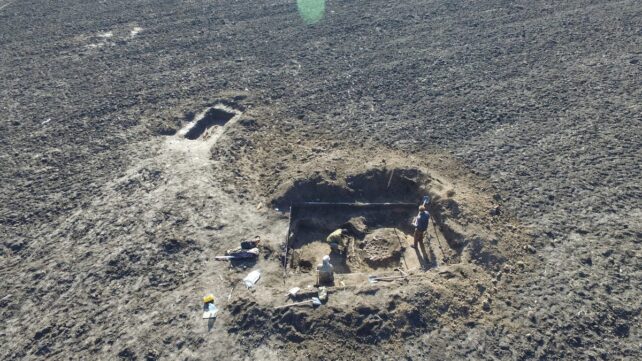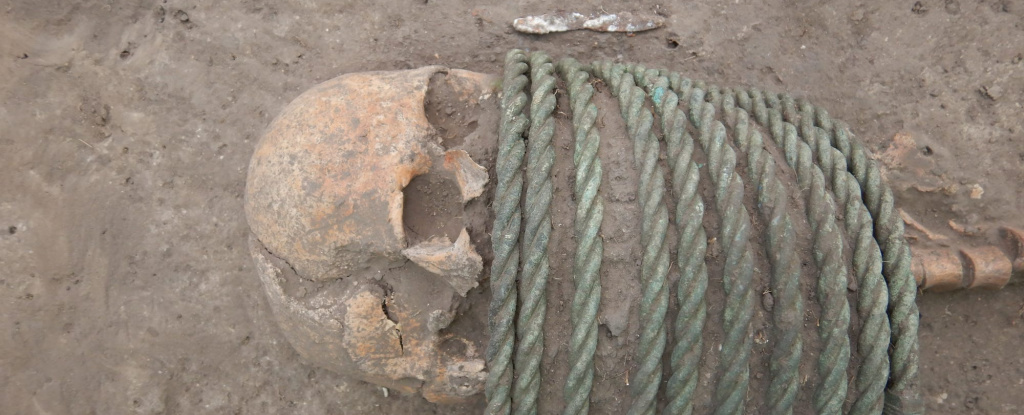Archaeologists discovered human remains ceremonially adorned with buckets on their feet and rings around their necks in a 1,000-year-old cemetery, reports say.
Archaeologists discovered the mass grave holding over 107 skeletons in what is believed to have been a pagan-era cemetery near Kyiv, Ukraine.
The mysterious burial site provided a glimpse into the Dark Ages, the 1,000 years of European history between the fall of the Roman Empire and the beginning of the Italian Renaissance.
Researchers unearthed axes, swords, spears, jewelry, bracelets, and food remains such as eggshells and chicken bones alongside the bones of the long-forgotten people.
Vsevolod Ivakin and Vyacheslav Baranov, two researchers who led the excavation, described the weapons as typical for Kyivan Rus – a medieval political federation in modern-day Belarus – and northeastern Europe.
A stone altar found at the site could have been used for pagan or early Christian rituals.
Ivakin and Baranov presented their findings at the Archaeological Institute of America’s annual meeting in Chicago in early January, Live Science reported.
The researchers said the graveyard contained male and female skeletons, but only females were adorned with elaborate neck rings, which “were apparently a kind of social marker,” Ivakin and Baranov said, Live Science reported.
The wooden buckets on the feet found in some of the male graves – which may have been part of funerary rituals – are reminiscent of 11th-century Prussian cremation and Pomeranian and Masovian inhumation cemeteries of military elites, the Independent reported.
Some artifacts are similar to those uncovered in the Baltics, Live Science reported. Volodymyr the Great – who converted to Christianity around 987 – ruled territories that extended to the Baltics.
The findings speak to a religious shift in Ukrainian history and to the arrival of Christianity in Eastern Europe.

Baranov told Business Insider that the findings date back to the late Viking Age, a period during which the territory of Ukraine was involved in common North European processes.
He said the findings “correspond well with the pan-European historical processes in Europe, and once again show the importance of studying the pan-European history as a whole and European peoples in the general context.”
He added that the nature of such a small and closed group was rare for its time.
At the time of the cemetery’s use, the people of the Ukraine region were undergoing a conversion to Christianity, most notably documented by the baptism of Volodymyr the Great, when he converted from his pagan beliefs to Christianity.
The archaeological project in Ukraine began in 2017. Research continued in 2022 and 2023 despite the challenges the war posed. Baranov told BI that several regular members of the expedition had already died in battle and that others were on the frontlines after being mobilized. The dwindling numbers have hindered the excavation process.
The ongoing research is a collaboration between several research centers, with the German Research Foundation and other organizations providing funding.
This article was originally published by Business Insider.
More from Business Insider:





